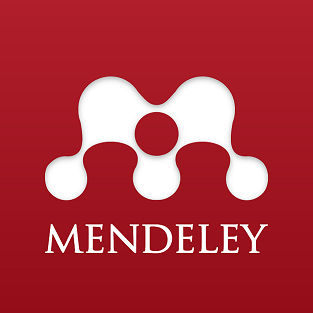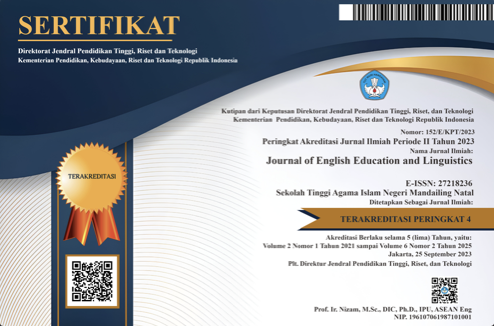Playing What Would You Do (WWYD) and Vocabulary-Drill: Its influence on Students’ Speaking Skills
DOI:
https://doi.org/10.56874/jeel.v1i1.45Keywords:
Game, Drilling Technique, Vocabulary, Speaking SkillAbstract
English teaching is the main key to support the success of world interaction. The success in mastering English facilitates togetherness among people around the globe. Therefore freedom is needed in learning and understanding language as a whole. The teacher can use some methods in teaching and learning process to help the students’ understanding. In this research, the researcher practiced a game which is named What Would You Do (WWYD). This research problems were; (1) is there any influence of WWYD game to the students’ speaking skill at second semester of STIT Muhammadiyah, Tanjung Redeb?, (2) Is there any influence of drilling vocabulary to the students’ speaking skill at second semester of STIT Muhammadiyah, Tanjung Redeb?, and (3) Is there any influence of WWYD game and drilling vocabulary simultaneously to the students’ speaking skill at second semester of STIT Muhammadiyah Tanjung Redeb?. The method of this research is partial correlation method, specifically to find out whether WWYD game (i.e. independent variable/X1) and Drilling vocabularies (i.e. control variable/X2) have correlation to the students’ speaking skill (i.e. dependent variable/Y). In the end of this research shown that WWYD game and drilling vocabulary can facilitate and help the students getting a confident in speaking about their opinion in English, and the statistic value performed in level good correlation between WWYD game used to the students’ speaking skill during conducted for second semester at STIT Muhammadiyah Tanjung Redeb.
References
Arif. S Sadiman. (1993). Media Pendidikan: Pengertian, Pengembangan dan Pemanfaatannya. Jakarta: PT. Rajagrafindo Persada.
Anggani Sudono, (2000). Sumber Belajar dan Alat Permainan. Jakarta. Grasindo
Richards, Jack C. and Theodore S. Rodgers (1986). Approaches and methods in language
teaching: A description and analysis. Cambridge: Cambridge University Press
Harmer, J. (2007) The Practice of English Language Teaching. Harlow: Pearson Education
Limited
Linse, T Caroline. 2005. “Practical English Language Teaching: Young Learners”. New York:
McGraw-Hill Companies, Inc.
Webster Merriem. 1986. Webster’s Third New International Dictionary. USA : MerriemWebster inc.
Harmer, Jeremy. 2007. How to Teach English. Harlow: Pearson Education Limited
Quianthy, Richard.L. 1990. Communication is Life : Essential college Sophomore Speaking and Listening Competencies. Pennsylvania State University: Speech Communication Association 1990
Kayi, Hayriye. (2006). Teaching Speaking: Activities to Promote Speaking in a Second Language. The Internet TESL Journal, Vol. XII, No. 11, November 2006. [
Nunan, David. (1991). Research Methods in Language Learning. Cambridge: Cambridge University Press. Get the Book Here
Chaney, A.L., and T.L. Burk. (1998). Teaching Oral Communication in Grades K-8. Boston: Allyn & Bacon.
Downloads
Published
Issue
Section
License
All articles published in the Journal of English Education and Linguistics are licensed under a Creative Commons Attribution-ShareAlike 4.0 International (CC BY-SA) license. This means anyone is free to copy, transform, or redistribute articles for any lawful purpose in any medium, provided they give appropriate attribution to the original author(s) and Journal of English Education and Linguistics, link to the license, indicate if changes were made, and redistribute any derivative work under the same license.
Copyright on articles is retained by the respective author(s) without restrictions. A non-exclusive license is granted to the Journal of English Education and Linguistics to publish the article and identify itself as its original publisher, along with the commercial right to include the article in a hardcopy issue for sale to libraries and individuals.
Although the conditions of the Creative Commons Attribution-ShareAlike 4.0 International (CC BY-SA) license do not apply to authors (as the copyright holder of your article, you have no restrictions on your rights), by submitting to the Journal of English Education and Linguistics, authors recognize the rights of readers and must grant any third party the right to use their articles to the extent provided by the license.

This work is licensed under a Creative Commons Attribution-ShareAlike 4.0 International License.








